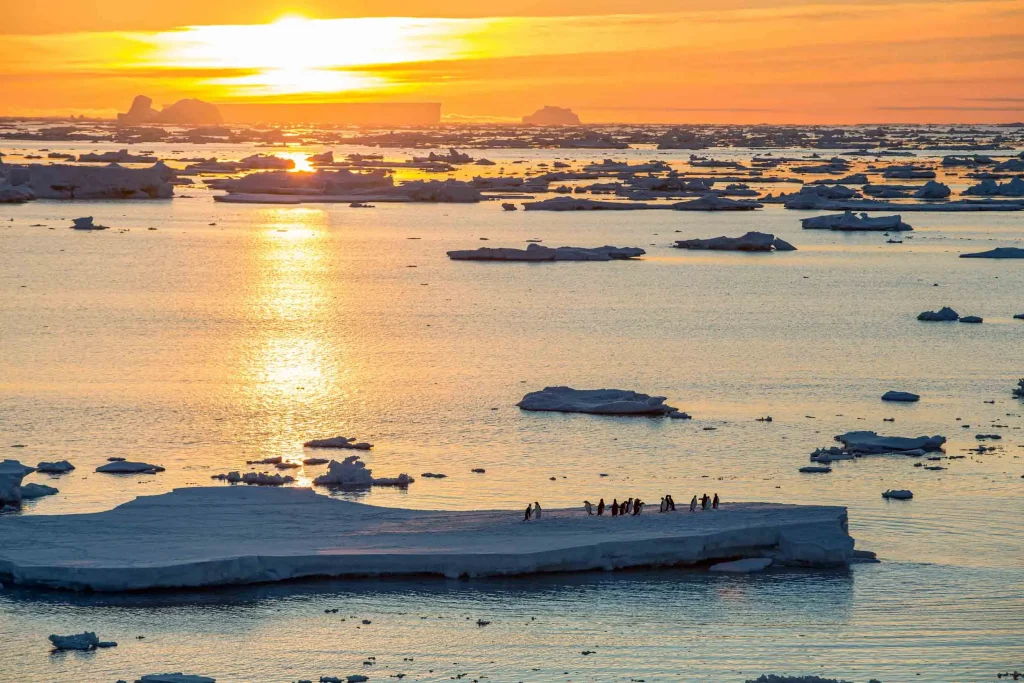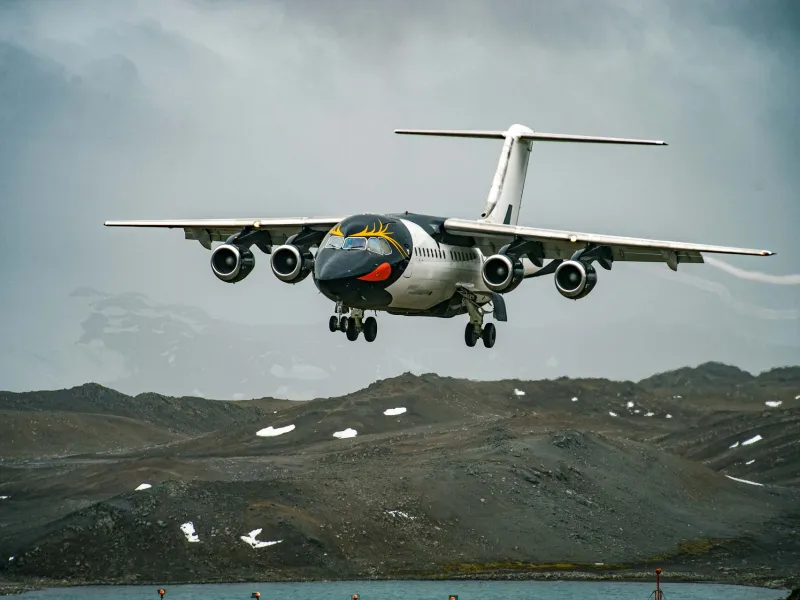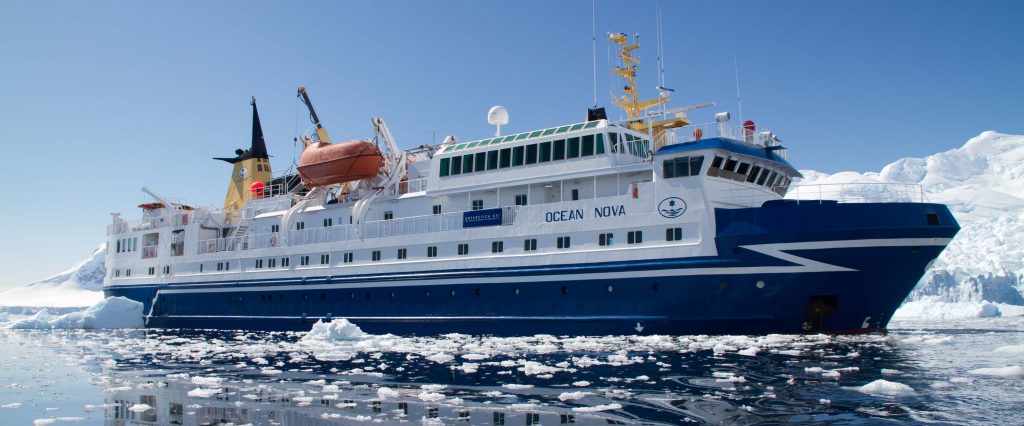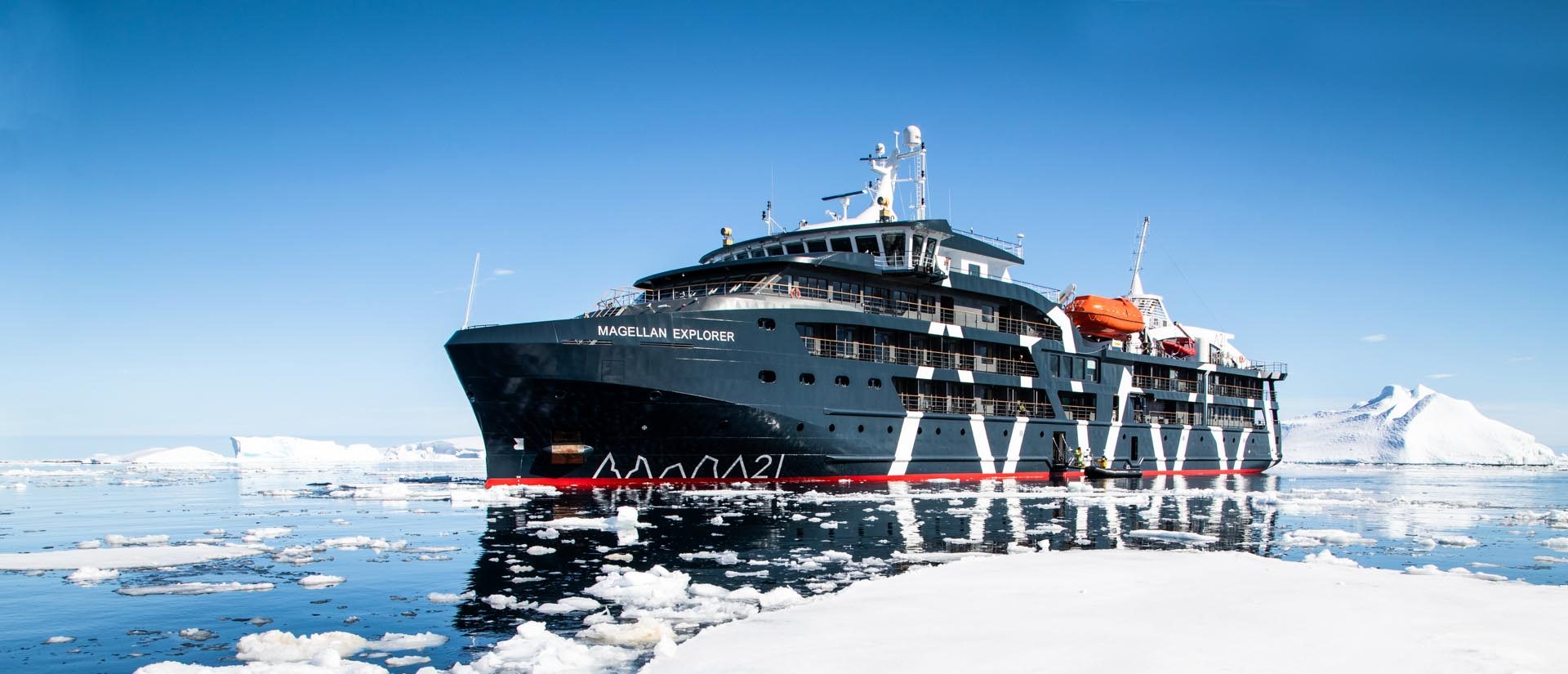The White Continent: When to Visit Antartica and Why.
Once unimaginable as a tourist destination, today this vast white wilderness promises an unparalleled adventure that offers a glimpse into the extremes of our planet’s natural beauty while serving as a crucial platform for scientific exploration and environmental conservation.
Most cruises to the continent focus on the Antarctic Peninsula, stretching toward South America, known for landmarks like the Lemaire Channel and Paradise Harbor – striking passageways flanked by towering icebergs, and its breathtaking icy landscapes home to diverse wildlife.
The travel season lasts from November to March, during the Antarctic summer when the sea ice melts enough for expedition vessels to cruise, the glorious residents – whales, penguins, seals, and sea birds – return in droves, and the days are at their longest. The weather during the summer season can be surprisingly mild with temperatures ranging from -2°C to 8°C (28°F to 46°F) but it is best to be ready for all conditions from frosty winter to mild spring-like days.
Choosing the best time to visit Antarctica depends on personal preferences and interests. Whether you’re a photography enthusiast or a wildlife lover, Antarctica promises something special every month. In this in-depth guide, we’ll navigate through the nuances of Antarctica’s seasons, helping you pinpoint the best time to set sail for the southernmost continent to equip you with the insights and knowledge needed to plan an unforgettable Antarctic expedition.
November
Best for: towering icebergs, spectacular untouched landscapes draped in snow, and animal love connections.
In November, you’ll have the privilege of being among the first visitors to Antarctica as it emerges from its dark winter slumber. With vast expanses of untouched sea ice, majestic ice floes, and a pristine layer of freshly fallen snow, all bathed in the legendary Antarctic light, November is a landscape photographer’s dream.
The winter ice undergoes a breathtaking transformation, evolving into stunning icebergs and intricate sculptures. Landing sites remain pristine, offering crisp snow and ice perfect for hikes, snowshoeing, and skiing. Walking on pack ice presents a rare opportunity to explore surreal frozen landscapes unlike anywhere else on Earth. November also presents fantastic photo opportunities, to capture mesmerizing sunsets painting the sky and the possibility of capturing the ethereal beauty of noctilucent clouds.
As summer approaches and mating season begins, wildlife activity picks up. Penguin rookeries buzz with activity as the residents engage in nest-building and courting rituals, providing a delightful glimpse into their lives. Seals and seabirds also partake in courtship displays.
December
Best for: extended daylight, the ultimate white Christmas and active wildlife.
With longer daylight hours, you’ll have ample time for exploration. The nearly 24-hours of sunlight and milder temperatures make accessing landing sites easier, allowing for more extensive exploration as the ice begins to break up.
Wildlife density increases in December as seals become active during their mating season, and penguin rookeries bustle with chicks hatching from mid-December onwards. December also marks the arrival of humpback whales in Antarctica, having completed their long migration from the tropics in search of rich feeding grounds. It’s a common sight to spot pods of whales, often close to shore, as they feed on krill and plankton.
January
Best for: Peninsula ice camping, kayaking, and fluffy penguin chicks.
January marks the peak of the summer season in Antarctica, making it a highly sought-after time to visit. With extended daylight hours, there is more time each day to explore.
Warmer and stable weather conditions lead to melting sea ice, providing numerous landing site opportunities and allowing for exciting activities like polar plunging and kayaking new pathways to explore spectacular landscapes. However, spotting glaciers becomes less common due to rising temperatures, and the landscape transitions from a snowy to rockier terrain. The ice opening also allows the season’s first Polar Circle voyages to reach 66 degrees south.
Wildlife encounters abound, with adorable fluffy penguin chicks chasing their parents across the ice when they return from the sea with their beaks full of food. Both humpback whales and minke whales are seen regularly in January with more and more arriving from the tropics in search of krill. Orcas are also spotted quite frequently, and you may be lucky enough to see a hunt.
February
Best for: Crossing the Antarctic Circle and whale watching
By February, the sea ice has retreated to its maximum level which opens up all itineraries across Antarctica including the Ross Sea, Crossing the Antarctic Circle and East Antarctica voyages. With receding sea ice, more landing sites become accessible, if weather conditions permit.
February is prime for whale-watching, as migrating whale pods have reached Antarctica. During Zodiac tours, keep an eye out for whales and feeding leopard seals. Penguin chicks are bigger and noisier than ever, making their first dives into the waters.
March
Best for: surreal sunrises and sunsets, whale watching and late-season travel deals.
March marks the end of the summer season in Antarctica, offering the final chance to experience the White Continent before it becomes ice-locked and wrapped in darkness once more. Fading daylight hours foster the return of sunrises and sunsets, casting the skies in a breathtaking array of colours, creating an irresistible draw for photographers seeking that perfect shot.
Whales continue to feast in Antarctic waters through March before heading north, offering one of the best periods for whale encounters in the region with playful displays and breaching. Encounters with these gentle giants are guaranteed, and the quieter atmosphere, with fewer ships, enhances the tranquility of the experience. Penguin chicks are older and more curious and begin to show interest in the visitors on their shore.
Getting to Antarctica
At the southernmost tip of the Earth, Antarctica remains one of the most remote and challenging destinations to reach, but this is one reason a trip there is so special. You can get to Antarctica by boat or plane.
Cruise or Fly?
For most travelers, the journey to Antarctica begins from either Ushuaia, Argentina, or Punta Arenas, Chile. The traditional route by sea involves crossing the notorious Drake Passage, a stretch of water renowned for its unpredictable and sometimes rough conditions. While about 30% of voyages encounter challenging weather, others find the passage surprisingly calm. Despite the potential for seasickness, many adventurers embrace the opportunity to experience this legendary maritime crossing.
An increasingly popular alternative is to fly from Punta Arenas, Chile, to the Antarctic Peninsula, reducing travel time from two days at sea to just two hours in the air. This option offers a quicker and more comfortable way to access the continent, appealing to travellers with limited time or
those seeking to avoid potential seasickness. While flying to Antarctica offers convenience, it comes with its own set of considerations. Flights are subject to weather conditions, and the rapidly changing Antarctic climate can pose challenges for accurate forecasting. As a result, there is a higher risk of delays compared to cruising.
Choosing the right ship
Finding the perfect vessel and departure tailored to your interests is key to ensuring an unforgettable experience. Whether you’re eager to explore with a team of biologists or geologists, get up close to icebergs, wildlife, and hard-to-reach places by kayaks, be one of the few to hike or ski otherworldly frozen landscapes, observe a range of penguin and whale species, as well as seals and seabirds, and photograph them alongside a photography expert, there’s a voyage to suit all preferences.
The two main cruise categories in Antarctica are Expedition Ships and Luxury Ships.
Luxury ships provide an unparalleled level of comfort and elegance, akin to a floating luxury hotel. These larger vessels typically accommodate more than 150 passengers and boast spacious interiors with multiple lounges, observation decks, bars, and restaurants. Some luxury ships even feature additional amenities like fitness centres, heated swimming pools, and theatres. Despite their lavish onboard facilities, luxury cruise ships still prioritise daily landings, ensuring passengers have ample opportunities to explore Antarctica’s awe-inspiring landscapes.
Expedition ships, on the other hand, embody a spirit of adventure and exploration. Often former research vessels with rich histories, these ships are designed to navigate remote and challenging environments, allowing passengers to delve deep into the heart of Antarctica. Expedition ships offer more active itineraries, providing opportunities for hiking, kayaking, and other outdoor activities led by specialist guides. While expedition ships may lack the opulent amenities of luxury vessels, they compensate with a focus on the “luxury of experience,” prioritising immersive encounters with Antarctica’s natural wonders.
For those seeking ultimate exclusivity, yacht charters offer a luxurious and personalised way to explore Antarctica. With custom-made travel plans and the freedom to roam secluded areas at your own pace, these charters provide an intimate and exclusive experience. Whether you’re traveling solo, with a partner, or in a group, there are options available for yachts accommodating up to 12 people, where you can reserve a cabin or even charter the entire yacht privately, ensuring a truly bespoke Antarctic expedition.
Which Antarctic Itinerary is For Me?
When planning your Antarctic adventure, review the ship’s itinerary and expedition program to ensure it aligns with your interests and preferences. A classic Antarctic trip is perfect for first timers, letting you explore the stunning landscapes and wildlife of the Antarctic Peninsula. For a more adventurous journey, crossing the Polar Circle takes you further south and into remote areas rarely visited by tourists.
Look for ships that offer a variety of excursions, including zodiac cruises, hiking, and kayaking. Also, consider whether the ship provides specialised activities or programs such as photography workshops, informative lectures, skiing, or even diving. If you’re up for it, Base Camp itineraries allow you to dive deeper into the polar environment while camping under the Antarctic sky. For the ultimate expedition experience, consider a Falklands, South Georgia, and Antarctica voyage, which combines the best of the sub-Antarctic region with Antarctica’s pristine landscapes.



